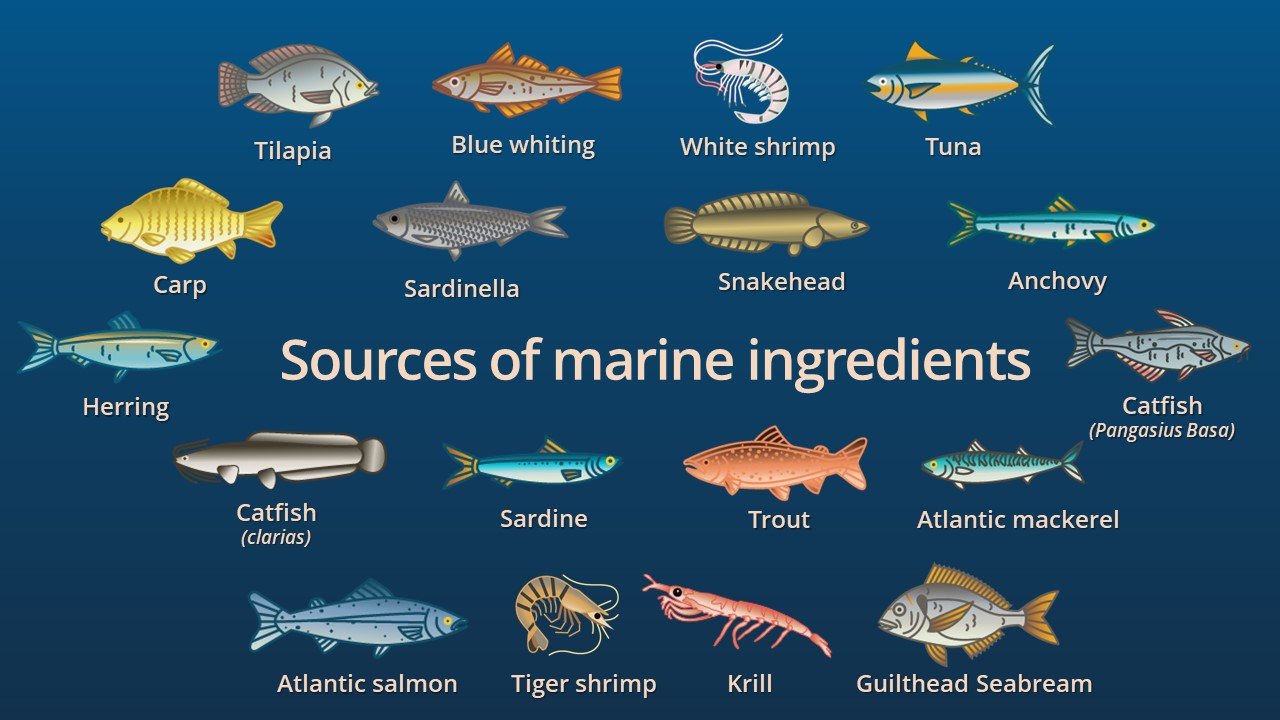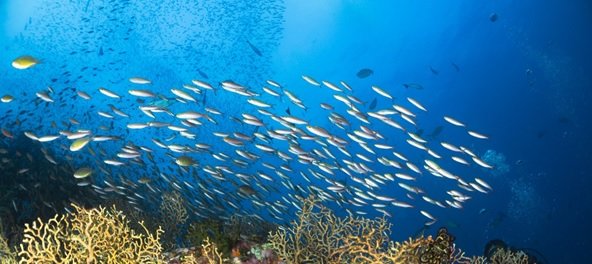Most common sources of marine ingredients

Small pelagic species
The small pelagic species that occupy the majority of the whole fish proportion are dominated by the Peruvian anchovy, Engraulis ringens. Peruvian anchovy provides enough raw material to account for 15-20% of the global annual production on any given year. Other important species are the Atlantic and Gulf menhaden in the US, and various sardine, sprat, mackerel, krill, and sandeel stocks around the world.
By-products
The growth in the utilisation of by-products allows to use what was previous waste and develop it instead as another valuable raw material from which fishmeal and fish oil may be produced. There is scope for increased fishmeal and fish oil production from seafood by-product.

Naturally high protein ingredients
Fishmeal and fish oil are obtained through cooking, pressing drying and milling fresh raw fish and/or food fish trimmings.
Fishmeal contains typically 60% to 72% protein, 10% to 20% ash and 5% to 12% fat, which is high in the health promoting omega-3 very long chain polyunsaturated fatty acids EPA and DHA, often referred to as 'omega-3s'.
Fish oil supplements: EPA and DHA have significant health benefits especially for heart conditions, arthritis and diabetes. It is also an essential supplement for pregnant women as these fatty acids are key to foetal brain development.
* Forage fish are also known as Small Pelagic fish species. They come from low trophic level fisheries and refer to fast-growing, early-maturing and highly productive species.









